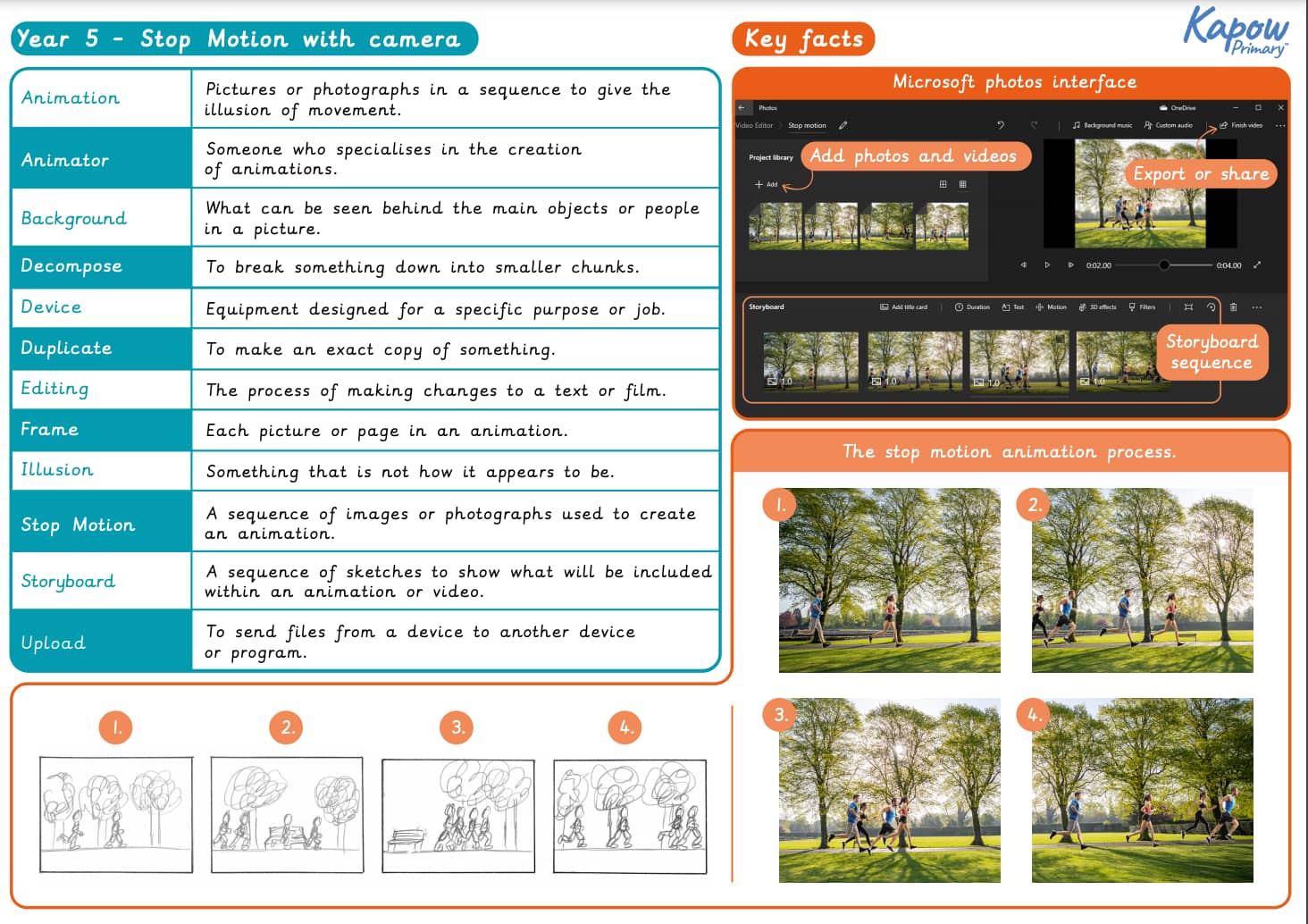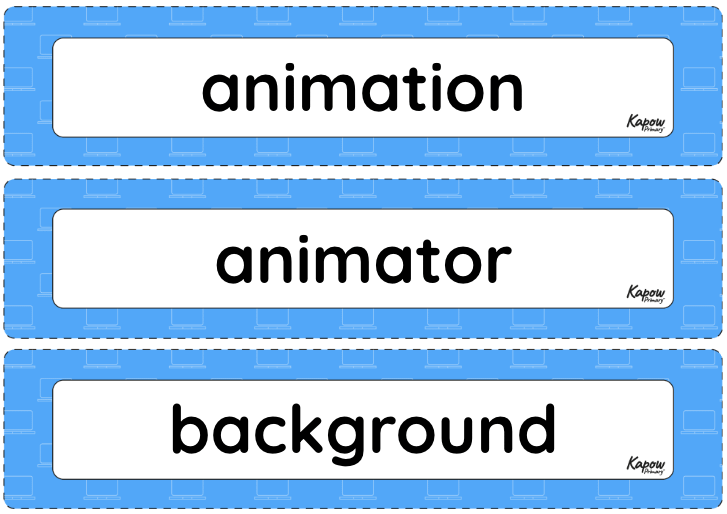Stop motion animation - Option 2: with cameras
This unit hub can be used to inform your medium term plan and to navigate to related resources.
Free trialThe Curriculum and Assessment Review final report has been released. We’re reviewing the recommendations and planning for future updates. Learn more
- Subjects >
- Computing >
- Key stage 2 >
- Year 5 >
- Creating media: Stop motion animation >
-
Stop-motion animation – Option 2: with cameras
Unit outcomes
Pupils who are secure will be able to:
- Create a toy with simple images and a single movement.
- Create a short stop-motion animation with small changes between images.
- Think of a simple story idea for their animation and then decompose it into smaller parts to create a storyboard with simple characters.
- Make small changes to the models to ensure a smooth animation and delete unnecessary frames.
- Add effects such as extending parts and titles.
- Provide helpful feedback to other groups about their animations.
Suggested prior learning
Google: Creating media: Website design
There is also a “Stop-Motion Animation” version of this unit available.
Lessons
Lesson 1: Animation explored
- To understand what animation is.
Lesson 2: Exploring stop-motion
- To understand what stop motion animation is.
Lesson 3: Planning my stop motion project
- To plan a stop motion video.
Lesson 4: Stop-motion creation
- To create a stop motion animation.
Lesson 5: Editing my stop motion project
- To edit my stop motion animation.
Key skills
Key knowledge
Related content
Unit resources

Knowledge organiser: Computing – Y5 Stop-motion animation (Option 2: With cameras)
Aimed at pupils, a single page which gives key facts and definitions from the unit "Stop-motion animation – Option 2:…

Vocabulary display – Computing Y5: Stop motion animation
A display version of the key vocabulary from the Stop motion animation unit.
Cross-curricular opportunities
Art and design – develop techniques, including their control and their use of materials, with creativity and experimentation. Improve their mastery of art and design techniques, including drawing, painting and sculpture with a range of materials [for example, pencil, charcoal, paint, clay].

